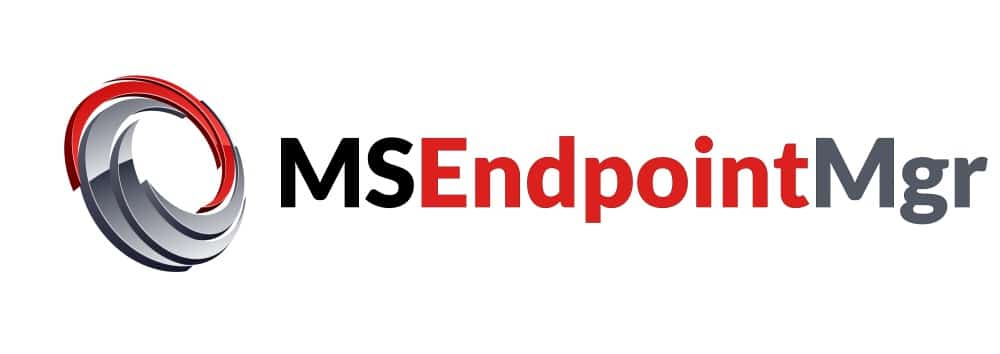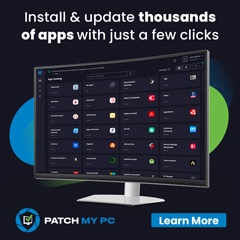In the great browser battle of Edge vs Chrome, the real question isn’t which one is better – it’s which one crashes slower during your Monday morning sync. Edge wants to be your enterprise soulmate, Chrome wants to be your everything. But let’s not forget: no matter what you choose, your IT department will still blame you when something breaks. So buckle up, clear your cache, and let’s browse through the pros and cons from an Enterprise perspective.
Both Microsoft Edge and Google Chrome are built on the Chromium engine, offering similar web compatibility and performance. However, beyond the shared foundation, Microsoft Edge distinguishes itself with enterprise-focused features in security, manageability, and integration with business ecosystems. This article explores why an enterprise might prefer Edge over Chrome, focusing on Intune app protection policies (aka MAM, aka APP), general security enhancements, and deep integration with Microsoft 365 – areas where Edge provides unique advantages for organizations.
Integration with Microsoft 365 Ecosystem
One of the strongest arguments for Edge in an enterprise setting is its native integration with Microsoft 365 services (Office 365, Entra ID, SharePoint, etc.). Edge was designed to work seamlessly in a Microsoft-centric environment:
- Entra ID Single Sign-On (SSO) and Conditional Access: Edge automatically recognizes Entra ID credentials. Users signed into Windows or Office 365 are automatically signed into Edge, enabling SSO to Office 365 web apps and resources without additional prompts. Crucially, Edge supports Entra ID Conditional Access policies natively, without needing extra plug-ins. For example, an administrator can require that only Edge be used to access certain corporate SaaS apps, or enforce multifactor authentication and device compliance for Edge sessions. Chrome, by contrast, does not natively integrate with Entra ID – organizations would need to deploy an extension or rely on device-wide controls, making Chrome less seamless in an Entra ID environment. Edge’s native tie-in means tighter control over who accesses corporate data via the browser and under what conditions.
- Microsoft 365 cloud attachments: When using Edge signed in with a Microsoft 365 account, the browser’s new tab page and search bar become enterprise-aware. Edge leverages Microsoft Search (via Bing) to surface internal company information (like SharePoint files, OneDrive content, or people in the directory) directly in search suggestions or results. Opening a new tab in Edge at work can show you your recent Office documents and recommended files to work on – a productivity boost for employees who can jump straight into work content. Chrome’s address bar by default is tied to Google search, which cannot access your Office 365 tenant data. While Google Workspace users get some integration (e.g. Chrome can search Google Drive if logged into a Google account), this is irrelevant for an organization standardizing on Microsoft 365. For Microsoft shops, Edge provides a unified work hub experience that Chrome cannot match.
- Favorites, Passwords, and Data Sync with Work Accounts: Edge allows users to sync favorites, saved passwords, history, and settings with their Office 365 (Entra ID) account. This means an employee’s work browser profile is tied to corporate credentials and cloud – if the employee leaves, the company can disable that account and retain control or wipe synced data from Edge. Chrome’s sync is typically tied to a personal Google account; if employees use personal Google accounts to sync work bookmarks or passwords, that data could remain with them (in their Google account) even after leaving the company. Edge’s integration with corporate identity thus helps protect company data from persisting in personal accounts. (Chrome does offer Chrome Enterprise options to restrict sign-in or use Google Workplace accounts, but in a Microsoft 365 environment those are additional burdensome steps.)
- Office 365 Web Apps and Productivity Features: Since Edge is built by Microsoft, it is optimized to work with Office web applications. There are conveniences like opening Office files in the online versions or desktop Office with one click. Microsoft has also added enterprise productivity tricks – for example, **Edge can use your work account to render Office files natively in the browser (via the Office Viewer) without needing Office installed. Edge also features an Enterprise Mode site list for IE mode (discussed later) managed via 365 Admin Center to seamlessly redirect legacy sites. These touches make Edge a more frictionless part of the Microsoft 365 workflow than Chrome.
In short, if your organization uses Microsoft 365, Edge is built to be the front-end of that cloud workplace. It extends the Office 365 experience into the browser with minimal configuration, whereas Chrome would be an outsider requiring extra integration effort or leaving gaps in the user experience.
Security and Threat Protection
Security is a paramount concern for enterprises, and both Chrome and Edge are secure Chromium-based browsers at their core. Chrome pioneered a strong multi-process sandbox and site isolation, and Edge inherits those fundamentals. However, Edge leverages Microsoft’s security ecosystem to add layers of protection and enterprise-specific security features:
- Microsoft Defender SmartScreen vs. Google Safe Browsing: Both browsers protect users from malicious websites and downloads but use different reputation services. Edge’s SmartScreen filter, powered by Microsoft Defender, checks URLs and file downloads against Microsoft’s vast threat intelligence databases. Microsoft touts SmartScreen as providing “industry leading protection” against phishing and malware campaigns. Independent tests have borne this out: an NSS Labs security test found that Edge (with SmartScreen) blocked 95.5% of phishing URLs, compared to 86.9% blocked by Chrome (which uses Google’s Safe Browsing API). In the same tests, Edge also led in malware blocking (98.5% vs 86.0% for Chrome). This superior filtering is a big deal for enterprises, as phishing is one of the top breach vectors. Edge’s SmartScreen also includes features like typosquatting protection (warning users if they mistype a known URL and land on a look-alike malicious site) to further guard against social engineering. Chrome’s Safe Browsing is very effective as well, but some organizations value that SmartScreen is part of the Microsoft security stack they already trust. Notably, Edge’s reputation checks integrate with Windows Security Center logs and can inform Microsoft Defender for Endpoint (enterprise endpoint detection & response), giving SOC teams more visibility into browser threats.
- “Enhanced Security Mode” (JIT Hardening): Edge has an optional feature to mitigate memory exploits by disabling just-in-time (JIT) JavaScript compilation on sites that are not commonly trusted, enabling stronger OS protections for those browsing sessions. This mode (formerly called Super Duper Secure Mode) reduces the attack surface from JIT-related vulnerabilities. It’s an example of Microsoft layering additional security on Chromium specifically for cautious enterprise use. Chrome does not offer an equivalent out-of-box feature to disable JIT; it focuses on performance, whereas Edge gives admins a choice to trade a bit of performance for extra security on high-risk sites.
- Built-in Password Monitor and Security Alerts: Both Chrome and Edge include password managers that can warn users if their saved passwords are found in breach dumps. Chrome’s Safety Check and Edge’s Password Monitor serve similar purposes. Chrome has innovated with features like one-time permission for access to mic/camera (auto-revoking after a session) and an AI-powered phishing detection that scans pages for suspicious characteristics. Edge similarly provides a Privacy Dashboard and strict tracking prevention modes to give users control over trackers and cookies. From a pure security feature standpoint on the desktop, the two browsers leapfrog each other with improvements, but Edge’s integration with Windows and Microsoft 365 gives it an edge in enterprise visibility and control. For example, events like user logins to websites can be logged into the Microsoft 365 security center – one can even hunt for scenarios like users logging into personal Gmail on a corporate PC via Defender for Endpoint logs, which is facilitated by using Edge.
- Upcoming/Additional Security Features: Microsoft has been rolling out a built-in Secure Network (VPN) feature for Edge. As of 2025, Edge’s “Microsoft Edge Secure Network” (powered by Cloudflare) provides encrypted VPN-like connections for the browser. This is primarily a consumer feature, but it adds value for users on public Wi-Fi and could complement an enterprise’s zero-trust network approach. Chrome does not ship with a native VPN service. Both browsers support Web Encryption standards and have options to disable legacy protocols; Edge, however, benefits from security baselines (pre-configured recommended security settings) provided via Intune or group policy – a one-click way for admins to enforce strong settings like TLS versions, certificate handling, etc., across all corporate browsers.
In summary, Edge’s security aligns with a Microsoft-centric defense strategy. It not only matches Chrome’s strong baseline (thanks to Chromium) but also plugs into Microsoft’s broader security/cloud ecosystem (Defender, Windows, Entra ID) to provide defense-in-depth. Enterprises using Microsoft security products will find synergy in Edge through features like SmartScreen and Application Guard that Chrome cannot natively replicate.
Data Protection, Compliance, and Intune APP
Beyond threat protection, controlling data leakage and ensuring compliance are major enterprise requirements. This is an area where Edge’s design for corporate use sets it apart from Chrome, thanks in large part to integration with Microsoft Intune and Microsoft Purview compliance tools.
- Intune App Protection (APP) for Mobile & BYOD: If your enterprise supports Bring-Your-Own-Device (BYOD) or unsecured personal devices accessing corporate data, Edge is the only browser that can enforce app-level protections on mobile. Microsoft Edge on iOS and Android supports Intune App Protection Policies (also known as Mobile Application Management, or MAM). These policies let IT define how corporate data behaves in the app: for example, you can prevent copying text from a corporate web page in Edge to a personal app, require a PIN or biometric to open Edge if it has corporate data, block screenshots, or wipe corporate data from Edge remotely if the user leaves the company. Previously, Microsoft had a standalone “Intune Managed Browser” for this purpose – now Edge fully replaces it, providing a richer experience with the same protections. Google Chrome does not support Intune app protection policies on iOS/Android; it is simply not a “managed app” in that ecosystem. This means that if a user on a personal mobile device accesses corporate web email or SharePoint via Chrome, Intune cannot prevent them from downloading or copying data to an unmanaged app. Many organizations mitigate that by completely blocking access from unmanaged browsers, effectively forcing users to use Edge for mobile access – which is exactly Microsoft’s recommendation. With Edge, you can allow controlled access: e.g. “Users on personal iPhones can read an Office 365 document in Edge, but cannot save or copy it to personal storage”. Such granular control is impossible with Chrome. This Intune MAM capability extends to Windows 10/11 as well: Microsoft recently introduced Windows MAM whereby even on a personal Windows PC, a user can log into Edge with a work account and get a protected session (downloads blocked, copy restricted, etc.) without full device enrollment. In short, Edge lets enterprises embrace flexible BYOD scenarios securely, whereas with Chrome the choice is often “all or nothing” (either manage the whole device or block access outright).
- Data Loss Prevention (DLP) and Information Protection: Edge has native hooks into Microsoft Purview Data Loss Prevention on Windows. This means if your organization uses Microsoft 365’s DLP policies to prevent sensitive data egress (like blocking uploads of confidential files to unapproved websites, or stopping users from printing or copying classified information), Edge can enforce those rules without any add-ons. For instance, if a user tries to upload a document labelled “Confidential” to a personal cloud storage site, Edge can detect that and block the action in accordance with the DLP policy. Chrome, in a Microsoft environment, would not be aware of M365 labels or policies by default – you’d have to rely on endpoint DLP agents running on the machine or browser extensions to get similar control. Microsoft specifically states that Edge offers native support for M365 DLP and even Insider Risk Management, providing audit logs and alerts if users try to siphon data via the browser. This deep integration helps meet compliance requirements (HIPAA, GDPR, etc.) because policies set in the Microsoft 365 compliance center directly apply to Edge activity. Essentially, Edge becomes an extension of your corporate compliance regime, whereas Chrome would be an outside element you must corral via separate tools.
- Enterprise Credentials and Identity Protection: With Edge, corporate credentials used in the browser can be guarded by conditional access. Administrators can even block the use of personal email logins in Edge on corporate devices to avoid data exfiltration (for example, prevent signing into Gmail or personal Dropbox in the work browser). While Chrome also has some policies to restrict logins or manage profiles, Edge’s alignment with Entra ID identity makes such controls more straightforward under one system. These features show how Edge treats corporate identity and data as first-class citizens.
- Unified Experience Across Managed/Unmanaged Devices: By using Edge as the default browser, users get a consistent, secure experience whether on a company PC, a home laptop, or a mobile device. If they log into Edge with their work account, the same protections, bookmarks, and policies travel with them. For example, a user’s favorites and enterprise new tab apps sync to all devices, and Intune can apply the appropriate policy based on device type (full device management for corporate PC, vs. app protection for a BYOD device). This reduces the need to train users on different browsers or worry about gaps in security when they switch devices. Chrome can sync data too, but again, typically to a personal account – unless the enterprise has Google Workspace and manages Chrome separately for those users. In a Microsoft-oriented enterprise, Chrome would introduce a separate silo of management (possibly involving Google Admin Console or third-party MDM to handle Chrome), whereas Edge is managed alongside the rest of your Microsoft 365 environment.
To summarize, Edge combined with Intune and Purview provides an end-to-end solution for data protection: from controlling how users can use corporate web apps on any device, to preventing data leaks via the browser, to logging and auditing user actions. These are critical enterprise needs. Chrome, while secure in its own right, lacks native solutions in these areas when used in a Microsoft-centric IT infrastructure. Companies would have to mix in additional tools or sacrifice some control if they choose Chrome. This makes Edge particularly attractive for organizations with strong compliance mandates or BYOD usage – it helps them achieve a higher security posture with less complexity.
Manageability and Deployment for IT Administrators
When deploying a browser across thousands of corporate endpoints, IT administrators care about manageability, policy enforcement, and compatibility with enterprise infrastructure. Microsoft Edge has been engineered with these needs in mind, often outpacing Chrome in enterprise manageability:
- Cloud-Based Management Portals: Google provides the Chrome Enterprise cloud management (via the Google Admin Console) for organizations that use Google Workspace or want to enroll browsers with Google. Microsoft, meanwhile, is introducing the Microsoft Edge Management Service in the 365 admin center. In practice, many Windows-centric organizations will just use Intune or Group Policy for Edge (although, if you’re still using GPOs you should seriously start looking at MDM policies instead!). Chrome’s reliance on either third-party tools or Google’s console is a mismatch for those not in the Google ecosystem. Indeed, Chrome’s own documentation points admins to use Microsoft’s Group Policy or endpoint management if not leveraging Google’s cloud. As Computerworld’s review put it: Edge has “the most robust set of management tools for enterprises by a mile,” while Chrome often relies on IT pros using non-Google tools to manage it.
- Extension and App Control: Controlling browser extensions is critical (to prevent risky add-ons or data exfiltration plugins). Both browsers let admins whitelist or blacklist extensions. However, with Edge, organizations can even force-install certain extensions company-wide and lock them (for example, an internal extension for single sign-on) using Entra ID and Intune policies. Chrome can similarly deploy extensions via policy, but doing so in a Microsoft environment might require using GPO or enrolling Chrome in Google’s service. Edge also can enforce that only authorized users can use developer mode or install unpacked extensions. Additionally, Conditional Access can tie into Edge to enforce certain conditions – e.g. an Entra ID Conditional Access rule could require users to be on the latest Edge version or have certain security configuration before accessing a sensitive app. These kinds of controls leverage Edge’s identity-awareness. Chrome cannot directly interpret Entra ID conditional access policies per browser instance (it would be at device level only).
- Deployment and Updates: Edge is built into Windows 10/11 by default. This simplifies deployment – most enterprise PCs already have it (and if not, it comes via Windows Update). There’s no need to push a separate installer to every machine or keep it updated – on Windows, Edge updates can be managed through WSUS or Windows Update for Business, or allowed to auto-update. Chrome requires installing on each machine (unless your base image includes it) and maintaining its updates separately (Chrome auto-updates itself by default, but enterprises might redirect that to their own update management). Using the default browser (Edge) saves IT overhead since administrators do not need to package and update additional browsers on Windows. Edge is also available on Mac and Linux, just like Chrome is, so cross-platform needs are covered. In terms of installation packages and MSI options, both browsers offer enterprise-friendly installers in various formats – call it a draw, with a slight edge (pun intended) to Edge for being already there on Windows systems.
- Legacy Web Apps and IE Mode: A distinctive advantage of Edge for many enterprises is its Internet Explorer mode. Many organizations have legacy internal web applications or old sites that rely on IE11 (ActiveX controls, old SharePoint, etc.). Edge can seamlessly render those within a tab using the IE engine (Trident) via IE mode. This is crucial because IE11 has been deprecated (retired in June 2022). Edge’s IE mode is supported through at least 2029 for Windows 10, giving enterprises a long-term solution for legacy compatibility. Chrome has no equivalent capability – if a user tries to access an old ActiveX-based page in Chrome, it simply won’t work, and there’s no built-in fallback. That means an organization using Chrome would have to keep an old IE browser around or find another workaround, which complicates their environment and poses security risks. By standardizing on Edge, one browser handles both modern and legacy needs, and IT can even disable the old IE standalone app altogether (which improves security but if you’re running devices where IE is still natively installed you should look at upgrading those OSes). Many businesses consider this a “big win” for Edge, as it lets them move forward to a modern browser without sacrificing access to critical older systems.
- Performance and Efficiency in Enterprise Use: While performance is often a consumer consideration, it has enterprise implications too (battery life for field workers, memory usage on VDI environments, etc.). Edge and Chrome are very close in speed and resource use, with trade-offs in different benchmarks. Chrome has historically scored slightly higher on certain graphic-intensive benchmarks, but Edge isn’t far behind. In everyday use, both are fast. Edge does have features like Sleeping Tabs (automatically putting inactive tabs to sleep to free RAM) which can be beneficial in an enterprise scenario where users keep dozens of tabs open all day. By reducing resource drain, Edge can extend laptop battery life and improve performance on multi-tasking – helpful for employees on the go or those using virtual desktop infrastructure with limited resources. Chrome has introduced a similar tab throttling feature as well (called Tab Freeze/Discard), so this gap is closing. Still, Microsoft often optimizes Edge specifically for Windows hardware (for instance, Edge has been shown to use less battery than Chrome on Windows in some tests, and it leverages features like segment heap on Windows to use less memory). These differences are evolutionary, but do contribute to an Edge narrative that it’s the browser optimized for the Windows/Office ecosystem. For IT, even small improvements in efficiency can translate to cost savings (longer battery life, less need to upgrade RAM, etc.).
- Cost and Support Considerations: Both browsers are free to use. However, Chrome Enterprise (Google’s package of management features and support) may involve additional cost if a company wants official support from Google or to use their cloud management – Google offers Chrome Enterprise Upgrade licenses per device (often cited for ChromeOS but also for browser support). Microsoft Edge is free and included with Windows, and support is generally included as part of Windows support or Microsoft 365 support agreements (no separate Edge license fee). If a business is already paying for Microsoft 365 E3/E5 licenses, they effectively have full rights to use and manage Edge with Microsoft’s assistance; adopting Chrome might not incur license fees, but if you ever need help from Google, that’s a separate channel. In the Intrust IT analysis, it’s noted that opting for Chrome Enterprise’s management/support can “add up for larger organizations,” whereas Edge piggybacks on existing Windows support and thus is a “budget-friendly option” for Microsoft-focused businesses. This isn’t to say cost should drive the decision, but it’s an additional factor: Edge might come at a lower TCO when you consider deployment, training, and support in a Microsoft environment.
Conclusion: Edge for the Enterprise, Chrome for the Consumer?
Google Chrome and Microsoft Edge are both excellent, modern browsers. For general web usage, they offer comparable experiences in speed, standards support, and extensions. However, in an enterprise context, especially one already aligned with Microsoft 365, Edge provides a more controlled and integrated environment that can better meet organizational requirements. It combines Chrome’s technical strengths (thanks to Chromium) with Microsoft’s enterprise security, compliance, and manageability capabilities:
- Security: Edge’s SmartScreen and hardware isolation give it a security edge (again, pun intended) in phishing and malware defense, and its integration with Intune and Defender means threats and risky behavior are more visible to IT. Chrome is very secure, but its signals live in the Google ecosystem unless extra steps are taken to forward logs to Microsoft’s tools.
- Compliance: Using Edge, companies can enforce data protection policies uniformly across the browser without kludges. Whether an employee is on a locked-down work desktop or a personal iPad, if they use Edge, the company can ensure data handling rules are respected (or access is denied). Chrome cannot deliver that level of assurance in an M365-centric compliance regime.
- Productivity and Integration: Workers on Edge benefit from single sign-on convenience, seeing work-relevant content surfaced in the browser, and even new AI features like Microsoft 365 Copilot integration in the Edge sidebar (which can draft emails or find internal info with proper safeguards – an emerging advantage as Microsoft brings more AI to Edge). Chrome, conversely, fits naturally if your organization is Google Workspace-centric. But for the majority of enterprises running on Windows, Office, and Entra ID, Chrome would be a somewhat foreign element that doesn’t integrate as neatly.
- Manageability: From an IT admin perspective, Edge is easier to standardize and control using the tools you already have. The ability to use one browser for all needs (modern, legacy, desktop, mobile) simplifies support.
None of this is to say Chrome cannot be used in an enterprise – indeed many companies do so successfully. Chrome also offers enterprise policies and its own management platform, and it integrates well with Google’s ecosystem. However, adopting Chrome in a Microsoft-oriented enterprise often means duplicating management effort (one set of tools for OS and Office, another for the browser) and potentially leaving some security/compliance gaps unless you invest in additional tools. For organizations heavily invested in Microsoft 365, the path of least resistance and greatest capability is clearly with Microsoft Edge.
In summary, Microsoft Edge’s unique enterprise features – Intune app protection, Microsoft 365 integration, stronger native security controls, IE mode, and unified management – make it a compelling choice for businesses that want a secure, manageable, and future-proof browser. It turns the browser from a simple web portal into an actively managed and protected workspace. Given that Edge now shares Chrome’s Chromium engine, you get this without sacrificing performance or compatibility. Thus, if your priority is to safeguard corporate data and streamline IT administration in a Microsoft-centric environment, Edge is not just an alternative to Chrome – it’s an upgrade.










Add comment